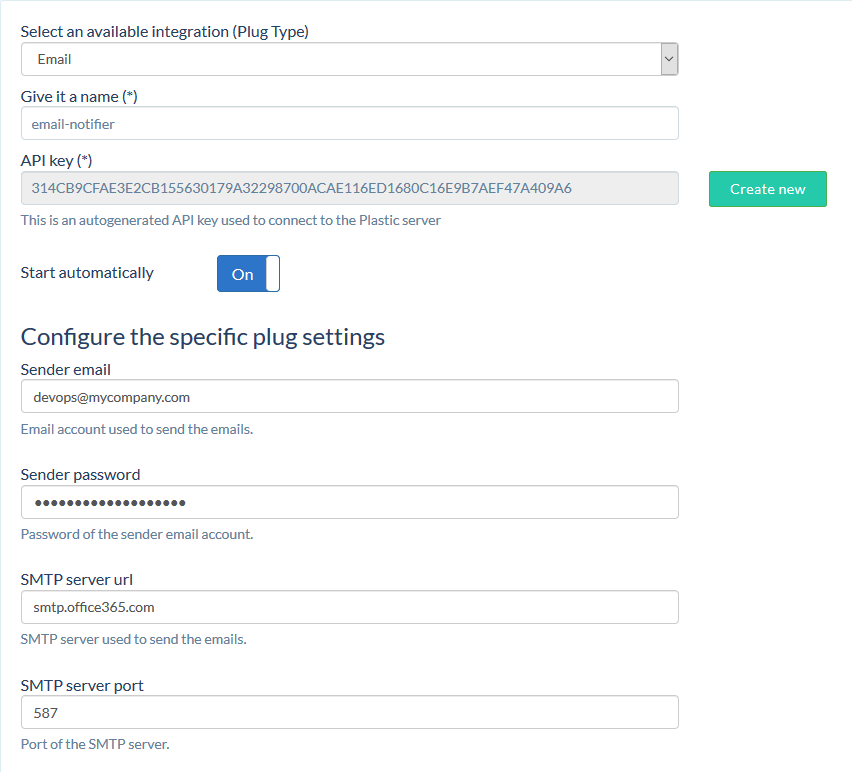The Email plug provides an interface to notify users through a regular email server.
This is the source code used by the actual built-in Email plug. Use it as a reference to build your own CI plug!
The executable is built from .NET Framework code using the provided src/emailplug.sln
solution file. You can use Visual Studio or MSBuild to compile it.
Note: We'll use ${DEVOPS_DIR} as alias for %PROGRAMFILES%\PlasticSCM5\server\devops
in Windows or /var/lib/plasticscm/devops in macOS or Linux.
If you just want to use the built-in Email plug you don't need to do any of this. The Email plug is available as a built-in plug in the DevOps section of the WebAdmin. Open it up and configure your own!
You'll notice some configuration files under /src/configuration. Here's what they do:
emailplug.log.conf: log4net configuration. The output log file is specified here. This file should be in the binaries output directory.notifier-email.definition.conf: plug definition file. You'll need to place this file in the Plastic SCM DevOps directory to allow the system to discover your Email plug.emailplug.config.template: mergebot configuration template. It describes the expected format of the Email plug configuration. We recommend to keep it in the binaries output directoryemailplug.conf: an example of a valid Email plug configuration. It's built according to theemailplug.config.templatespecification.
To allow Plastic SCM Server DevOps to discover your custom Email plug, just drop
the notifier-email.definition.conf file in ${DEVOPS_DIR}/config/plugs/available.
Make sure the command and template keys contain the appropriate values for
your deployment!
The Email plug provides an API for mergebots to connect to a SMTP server and send messages to developers with it.
When a mergebot requires a Notifier plug to work, you can select a Email Plug Configuration.
You can either select an existing configuration or create a new one.
When you create a new Email Plug Configuration, you have to fill in the following values:
You'll need to make sure your email provider allows you to use their service as a SMTP server. For instance, here are the instructions for GMail and Outlook
If you have any questions about this plug don't hesitate to contact us by email or in our forum!

